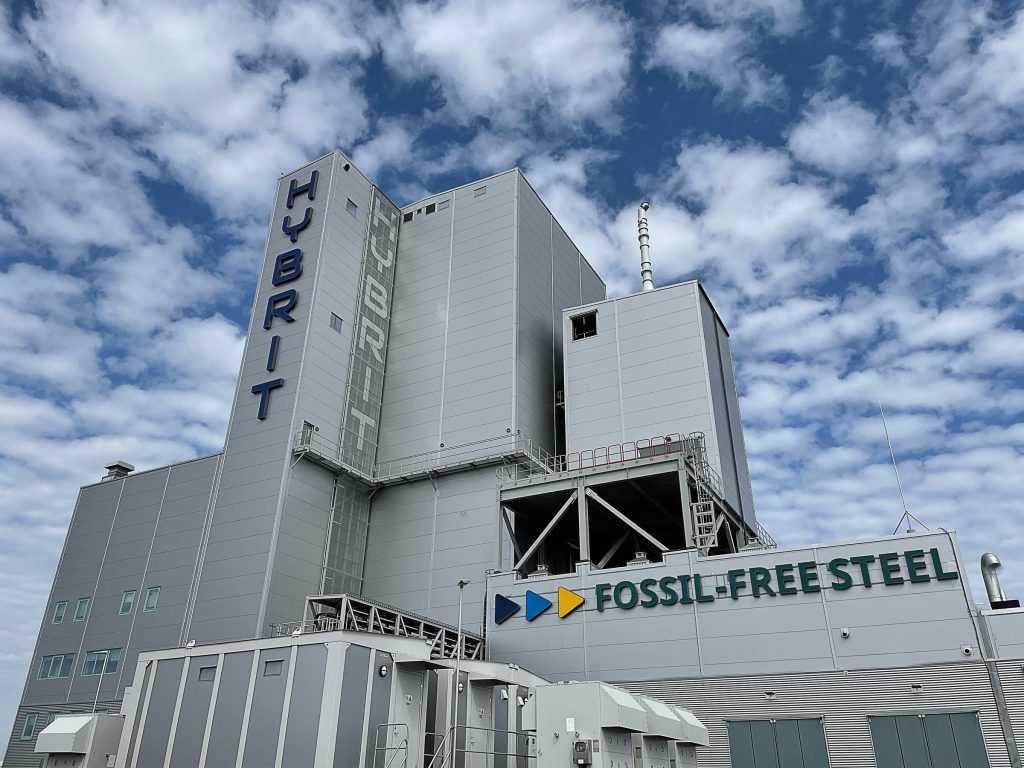As the climate emergency becomes more urgent, it makes sense that we turn our attention to steel and its effect on the planet. After all, the steel industry alone is responsible for an entire 7% of the world’s carbon emissions. The traditional process for creating this material releases an awful lot of CO2.
While we can’t be without steel (we need it for everything from surgical supplies to cars and construction supplies), the earth needs the steel industry to start applying planet-friendly changes across the chain, from producer to user.
This is why SSAB – a Swedish steel company – have produced high-strength steel from raw materials and eliminated CO2-emissions from the process. They began using fossil-free electricity and fuel throughout their entire production, but decided to take things a step (or, gigantic leap) further. Together with partners they created a technology to make steel with virtually no carbon emissions. They call this technology HYBRIT (Hydrogen Breakthrough Ironmaking Technology.)
How does it all work?
The solution to steel’s sustainability problem was clear – find a way to make it planet-safe. The steps to accomplish this were not as obvious, but SSAB developed a new process for creating steel that meets those urgent demands.
With its partners, SSAB have developed the technology at their HYBRIT plant to produce steel without the use of any fossil fuels at all and with virtually no CO2-emissions. The only by-product from the process is good old water vapor.
The traditional steel production process generates a lot of CO2, which is what causes the damage to the climate. This is usually the key emission released during steel making, but SSAB have revolutionized the process to replace it with water instead.
Now, steel producers like SSAB can create steel where the by-product is water. They’ve even bottled some of it, calling the liquid Pure Waste. Martin Pei, CTO of SSAB, has even drunk some of it.
While the bottles won’t be sold or distributed wildly, they mark an exciting time in the industrial industry, proving what can be achieved when steelmakers strategize sustainably.
”A bottle of Pure Waste from the HYBRIT pilot plant is the best proof of what this technology means. We are going from emitting CO2 to emitting water that can easily be recycled. It is nothing short of an incredible possibility,” Pei adds.
Put plainly, what this all means is SSAB and its partners has developed a game-changing steel making technology with almost no CO2 footprint. By switching the by-product from CO2 to water, they ensure fossil fuels remain underground.
Hybrit technology, and the Pure Waste that comes for it paints a positive picture of a society finally moving away from fossil fuels. Making SSAB’s steel production process the norm will help combat the climate change crisis.
Spilling the steel secrets
SSAB’s HYBRIT technology has proven it’s possible to produce steel on a large scale without emitting CO2, which will have less consequences on the environment, is an undeniable giant leap forward.
To create a significant reduction in steel’s carbon emissions, every major player in the industry needs to emulate the same process. That’s why SSAB has applied for a portfolio of patents for the HYBRIT process, so that the technology can be shared with the world.
“The world is at a precipice of climate change. We have proven that there is a functioning technology to make fossil-free steel. But we cannot change the entire industry ourselves. Others need to act quickly also to keep the Paris Agreement goals alive. I hope that our colleagues in the industry will seize this chance to transform our sector from a climate villain to a climate hero,” added Pei.
SSAB wants to support and inspire steel manufacturers on their journey towards zero emissions, drastically reduce greenhouse gas emissions and supporting customers to build an entirely fossil-free chain along the way.
This new process will also support businesses by fulfilling demands from investors and legislators and to avoid the high costs connected to carbon taxes. SSAB also want to support users to demand more environmentally friendly policies in steel production and reduce their own carbon footprints through the electrification of machines and vehicles, and solar heated buildings. Fossil-free fuel is a multi-layered solution.
SSAB will offer fossil-free steel to the market in 2026.
The knowledge sharing platform is public and available here. It is a living platform, where much more information will be available during the coming months and years. In addition, it is possible to propose additional content and to consult SSAB experts here.

